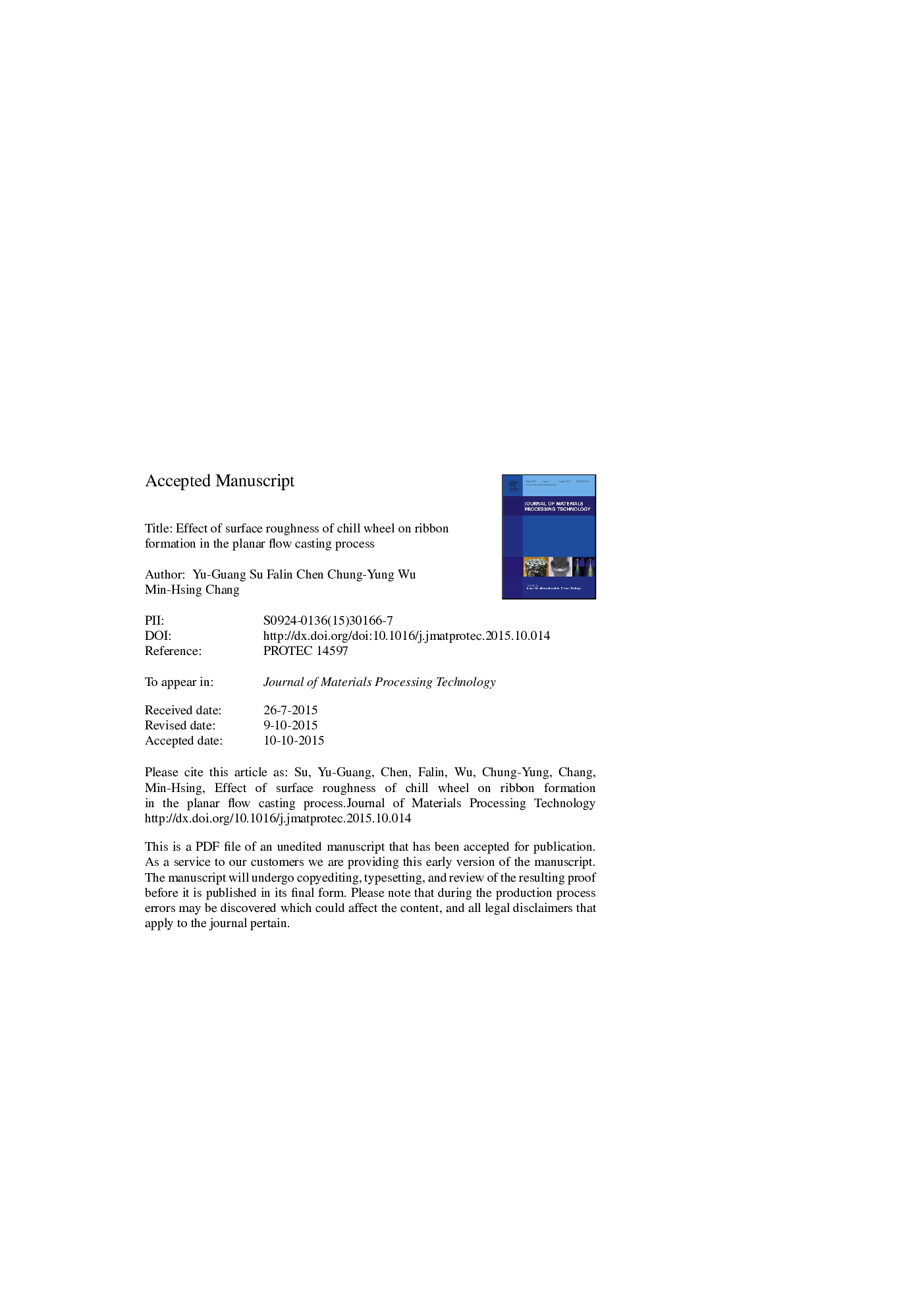| Article ID | Journal | Published Year | Pages | File Type |
|---|---|---|---|---|
| 7176870 | Journal of Materials Processing Technology | 2016 | 22 Pages |
Abstract
The variations of ribbon topography and surface quality with the surface roughness of chill wheel were examined systematically and the average cooling rate during the planar flow casting process was evaluated. The result revealed that an increase in the roughness lengthens the melt puddle and increases the ribbon thickness. A lower roughness was found to induce the appearance of herringbone pattern on the wheel-side ribbon surface and capture more air at the wheel-melt interface to form larger elongated air pockets on the ribbon surface. On the contrary, less air was trapped at a higher roughness and the distribution of air pockets on the ribbon surface was mainly corresponding to the concave spots on the wheel surface. The roughness on the wheel-side ribbon surface increased monotonically with the wheel roughness, while a minimum roughness was observed on the opposite air-side surface exhibiting the smoothest air-side ribbon surface. A higher wheel roughness enhanced the thermal contact resistance at the interface between the ribbon and chill wheel, which reduced the average cooling rate during the casting process and resulted in the occurrence of crystalline structure in the ribbon formation.
Keywords
Related Topics
Physical Sciences and Engineering
Engineering
Industrial and Manufacturing Engineering
Authors
Yu-Guang Su, Falin Chen, Chung-Yung Wu, Min-Hsing Chang,
